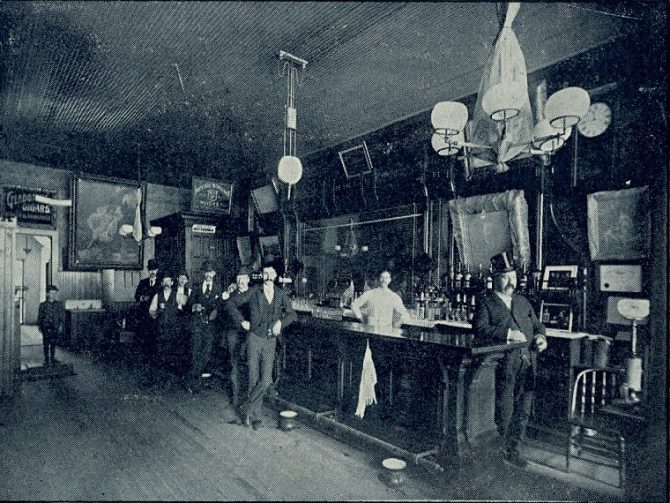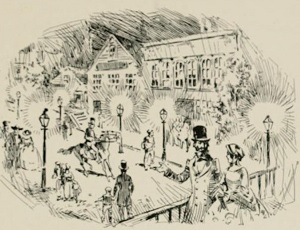A long forgotten social revolution began on September 4, 1850 with the lighting of Chicago's first hundred-odd gaslights. 75 Years of Gas Service in Chicago quotes the Tribune:
"Wednesday marked an era in Chicago. At about 2 o'clock P. M. the gas pipes were filled and brilliant torches flamed on both sides of Lake Street as far as the eye could see, and wherever the posts were set. The lanterns not having been affixed to the posts, the bright gaseous flame eddied and flickered in the wind, sometimes apparently disappearing, but anon shooting up as brightly as ever."
By today's standards, the lights were distinctly yellow and not very bright. However, passengers arriving from the dark countryside on Chicago's equally novel railroad knew they were not in Kansas anymore.
Industry could now operate 24/7. Streets, businesses and homes now had bright, cheap and reliable light. Gaslights once lit, stayed on. No need to replace candles or refill oil lanterns.
Footpads and burglars could no longer ply their trade in the dark, but gaslit theaters, retail stores, saloons and gambling dens took in far more money. In an unexpected threat to morality, children and adults played late at night.
Electric lights were common by 1909, but gaslights were still a symbol of everything wrong with modern society. The Vice Commission and Chicago by Gaslight raged against the moral dangers of nighttime activities. Richard Lindberg revisited the era with his Chicago by Gaslight: A History of Chicago's Netherworld, 1880-1920.
Gaslights had arrived in Baltimore in 1816, a few years after they began in London. Thus the technology was well-developed by 1850 when it arrived in Chicago. Coal was distilled in large ovens, producing gas. Coke, nearly pure carbon and used in making steel, was left behind as a valuable byproduct.
The gas company had no problem finding investors and developing and rapidly expanding the necessary network of gas plants, meters, tanks and pipes. Indeed, the major problem it faced was completion. Peoples Gas took over 12 other companies starting in 1897. One of the companies was Ogden Gas owned almost entirely by members of the notoriously corrupt 1895 City Council.
The improbably named Romance of the Gas Industry explained the technical developments that continued throughout the gaslight era. New ways of making gas from coal, such as water gas, were developed. One company imported natural gas from Indiana.
Automatic ignition was introduced. Limelights in theaters produced a bright white light by heating calcium dioxide (quicklime.) Gas mantles, producing brighter light with only one-twelfth the gas consumption, became available in the 1890s, just when less reliable, but less troublesome, electric lighting made its debut.
However, consumers largely stuck to old inefficient gaslights until they upgraded to electricity. Illuminating gas, used in the old fixtures, was sootier and had less heat content than consumers wanted for stoves, gas heaters and industrial uses--the new future of the gas industry. The City, which regulated Peoples Gas and still used gas streetlights in some areas, continued to demand illuminating gas through the early 1900s.
Reminders of the gaslight era remain. Electric fittings follow gas pipe standards. Chicago electricians still find live gas pipes connected to light fixtures. Old gas plant sites such as Seattle's Gas Works Park remain contaminated. Radioactive thorium, once the main component of gas mantles, contaminates the site of the Lindsay Light Company in Chicago. Suburban Riverside, Illinois still uses its original gas streetlights. Thanks to artificial light we work and play 24/7.





Add a comment to: Gaslight: Technology That Changed Chicago